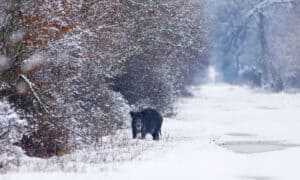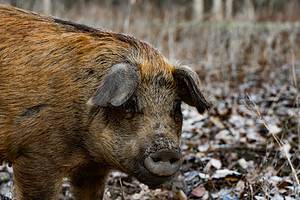Continue reading for our analysis...
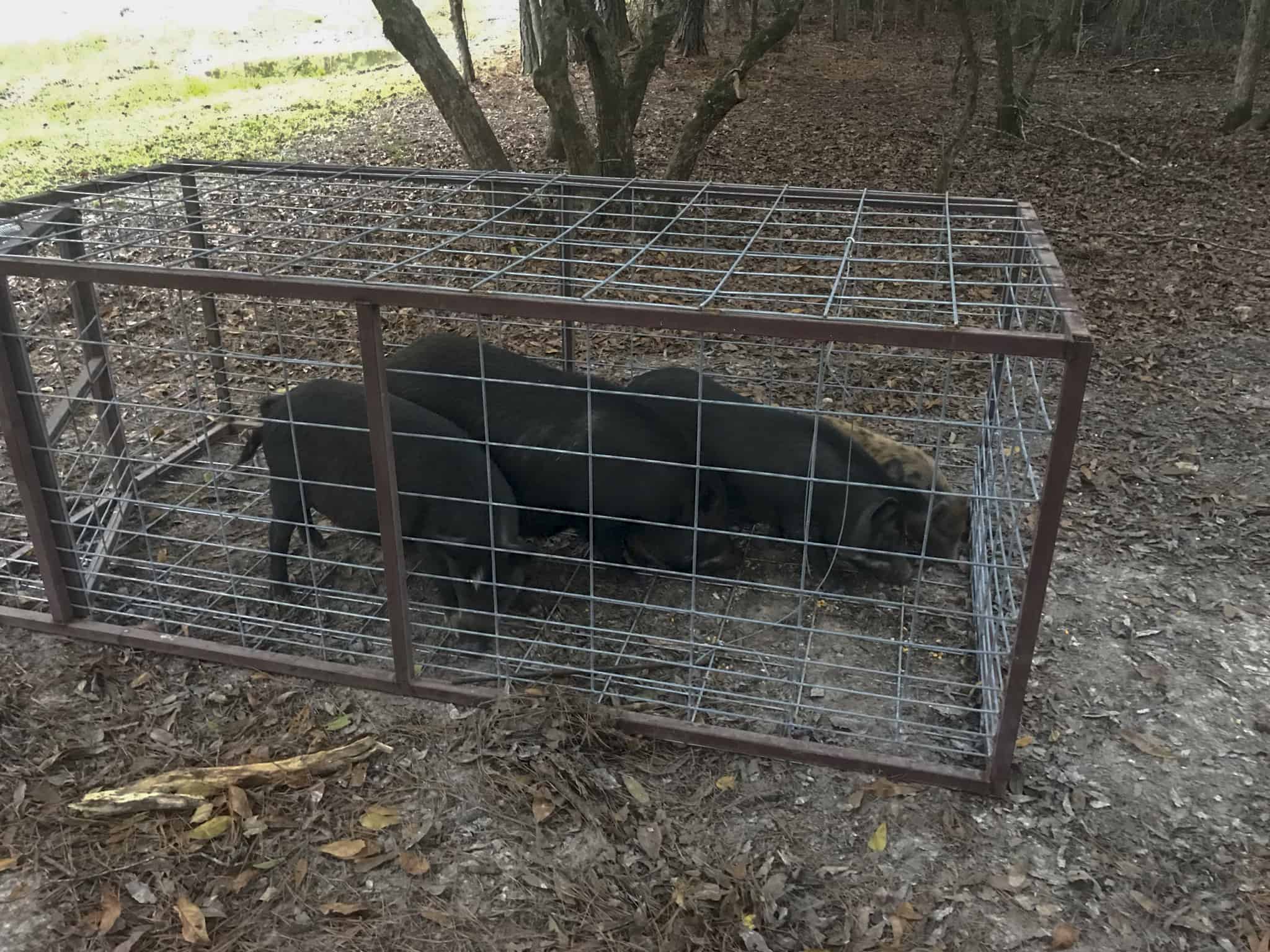
Shared by someone who describes themselves as a hog trapper, this shows a useful method of trapping tens of wild hogs in one go. Trapping is one of the recognized ways of tackling the issue of wild hogs in the US. Scroll down to watch the full video of chaos in the pen when the door slammed shut.
Where Did Wild Hogs Come From?
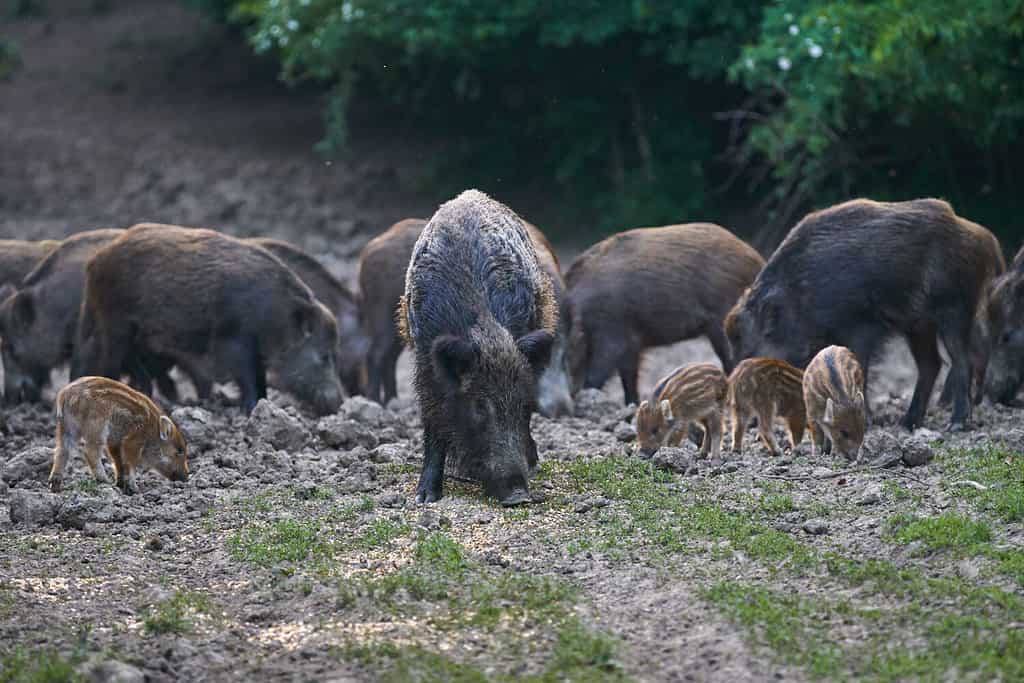
Early explorers and settlers brought hogs over from Europe to use as a food source. Eventually, some of the animals escaped and formed wild colonies.
©Slatan/Shutterstock.com
You will also see wild hogs called wild boars, feral pigs, or razorbacks. According to the US Department of Agriculture, they are not a native species of the Americas. They were introduced in the 1500s by early settlers and over the next centuries some have escaped to then thrive in the wild. Also, the Eurasian or Russian wild boar was later introduced to the United States for sport hunting. The wild hogs that are seen in the US today are descendants of both these groups or even hybrids of the two. Today, there are wild hogs in at least 25 states and their numbers may reach 9 million. This number is high because of the wild hog’s adaptability to a variety of climates and conditions, as well as a lack of natural predators in certain areas.
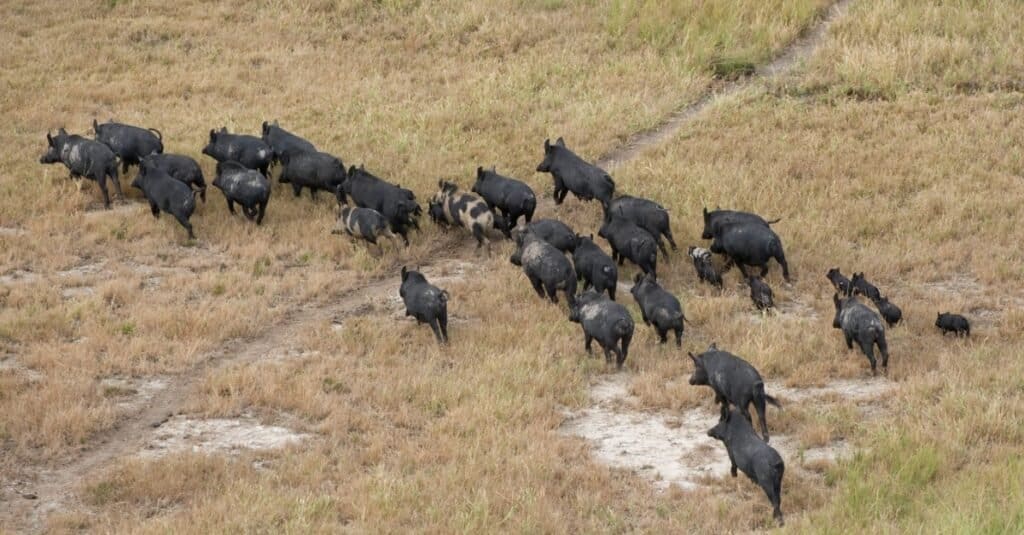
Feral pigs cause a lot of damage to crops and the landscape due to rooting.
©iStock.com/JohnCarnemolla
What Damage to Wild Hogs Cause?
When there are many wild hogs in a habitat it affects the environment and native species. They feed by digging into the ground with their snouts and tusks looking for plants. As they are omnivores, they will also eat small animals that they come across. This can be particularly damaging for ground-nesting bird species. They scare off the adult birds and eat the eggs.
Their diet puts them in competition with species such as deer and turkey who may need to leave the habitat to find food. Overall, the effect is to reduce biodiversity by up to a quarter of previous levels. They also damage water courses and farmland and even pose a threat to the safety of pets and children as they can be aggressive.

States have adopted a few methods to try to keep wild hog populations under control, including hunting and trapping.
©Rudmer Zwerver/Shutterstock.com
How Can Wild Hogs Be Controlled?
The states with the highest wild hog populations are Texas with around three million and Oklahoma with around one and a half million. However, there are sizable populations in many other states including Louisiana (750,000), Georgia (600,000), and Florida (500,000).
States have adopted a number of methods to try to keep populations under control. Fencing may be used to keep them in one place. However, wild pigs are strong enough to upturn these fences or simply go under them by utilizing a rooting technique. Another method, hunting, is permitted in some states, but pressure from hunting can drive them to move away from where they are hunted.
Trapping, as we see in this clip, is an efficient way of reducing wild hog populations and removing lots of them at the same time.
How Large Do Wild Hogs Get?
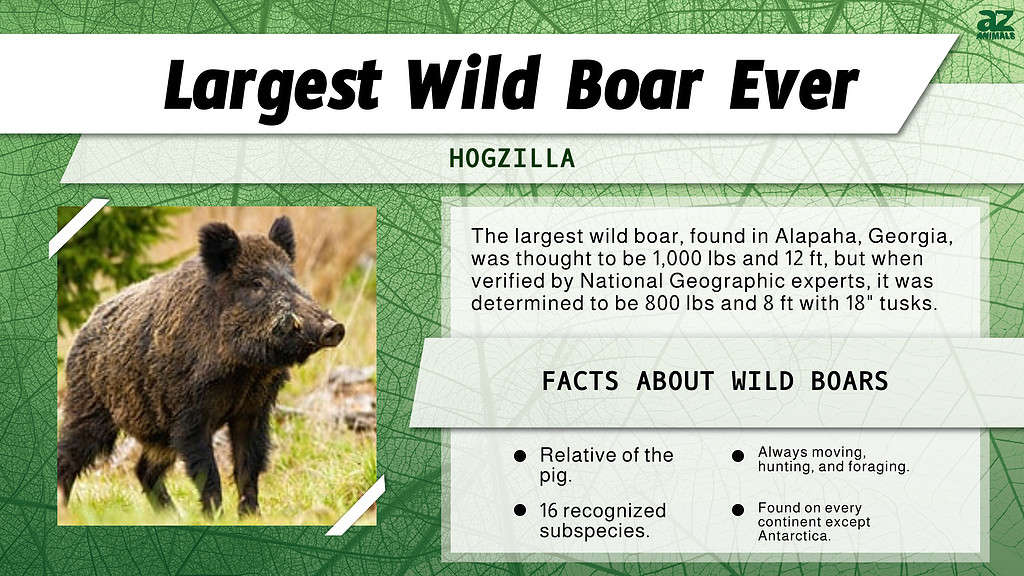
North American wild boars are descendants of Eurasian or Russian wild boars who were brought to the Americas for sport hunting. Over years of reproducing, as well as breeding with escaped domestic pigs, the modern-day feral pigs in North America are imposing figures. They average 75 to 250 pounds in weight, though some can weigh up to 450 lbs or more. Wild boars usually stand 3 feet tall and measure 5 feet long.
In the United States, the largest wild boar ever caught (pictured above) weighed an unbelievable 800 lbs and stood 8 ft tall.
There are 16 recognized subspecies of wild boars worldwide. Below are a few of the subspecies outside the United States with their maximum weights:
- Ussuri Boar – The Ussuri Boar (S. s. ussuricus) is thought to be the largest of the wild boars. Found in Eastern China and parts of Russia, adult males are often found above 500 pounds, with some individuals weighing even more.
- Carpathian Boar – The Carpathian Boar (S. s. attila) is a large boar subspecies found in Ukraine, Romania, Hungary, and nearby areas, averaging over 300 pounds, with some individuals reaching massive sizes of over 800 pounds when food is abundant.
- Middle Asian Boar – The Middle Asian Boar (S. s. nigripes) inhabits areas of Kazakhstan, Mongolia, Afghanistan, and nearby countries. The maximum weight of a Middle Asian Boar fluctuates depending on habitat and resource availability. Middle Asian boars can reach weights up to 500 pounds.
Thank you for reading! Have some feedback for us? Contact the AZ Animals editorial team.




